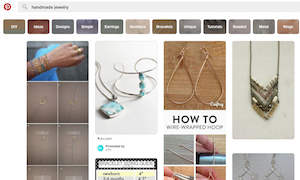Every maker dreads the prospect of facing a bad review on social media. And yet there's no avoiding it — bad reviews come with the business of making products. The key is responding properly so as to not alienate other customers and prospective buyers. How do you do that? Follow these five steps as you engage:
- Be humble. In and of itself, criticism isn't a bad thing. Take it gently and absorb it. What are your detractors trying to say? Are they pointing out legitimate design flaws? Do their comments reflect expectations you hadn't anticipated? In either case, their criticism can teach you more about the market you're entering. Say you've created a new shaving butter you think will redefine what it means to give guys a close shave, but then the reviews come in and they're not what you expect. Asking questions about the experience with your product could reveal problems with the ingredient mix — a crucial piece of product design feedback that could help your business over time.
- Be thankful. Humility can become thankfulness when you realize how much you can learn from critics. Also, firing off a quick but heartfelt note of thanks to your detractors may diffuse their anger and win you time to fix whatever the problem is. Taking the shaving butter example: a humble but heartfelt thanks for the criticism coupled with a promise to make it right — and then delivering on that promise with a coupon — could win you a customer for life.
- Take action. Once you've dug into the nature of the criticism or complaint and honored the time your detractors took to give you feedback, start tinkering. What design changes could you make? Are you pricing properly? What about a different policy related to returns and upgrades? Think about every opportunity to improve the experience of buying your product and then start experimenting. Granted, shaving butter is a pretty straightforward product, but experimenting with different smells and packaging could lead to a premium offering you wouldn't have considered without having to first deal with criticism.
- Re-engage. And that's really what this is, an experiment. Take your changes back to your detractors and explain what you've done, offering them a chance to try the newer version of your product. Odds are most will decline but the ones who accept may become fans because you refused to disengage and leave them in their misery. In the shaving butter example, a care package with a couple of different options to try may be best. Who knows? Your detractors may post a review of the one they like best, giving you crucial feedback and free marketing for a product you've yet to release. Plus, 88% of consumers trust online reviews as much as a personal recommendation .
- Post what you've learned. Finally, use every experience with a dissatisfied customer as an opportunity to learn something new and teach other makers. Whether in a blog post, video or series of social media posts, relay the experience, what you did, why and what you'll be doing different in the future. Customers will no doubt appreciate your transparency as your peers gain from your hard-won wisdom. In the shaving butter example, the story of "the ingredient gone wrong" and how you fixed it may lend insight into how you make products while also clarifying your desire to serve every customer as well as you can.
You won't always be able to turn critics into fans, and you don't need to. Take feedback as motivation to improve. You'll not only display proper empathy to those who feel they didn't get their money's worth, but you'll also prove to others who do believe in your products that their faith is well-placed.
 Tim Beyers Tim is a freelance business writer. He writes about the business of innovation, comics and genre entertainment on The Full Bleed.
Tim Beyers Tim is a freelance business writer. He writes about the business of innovation, comics and genre entertainment on The Full Bleed.





